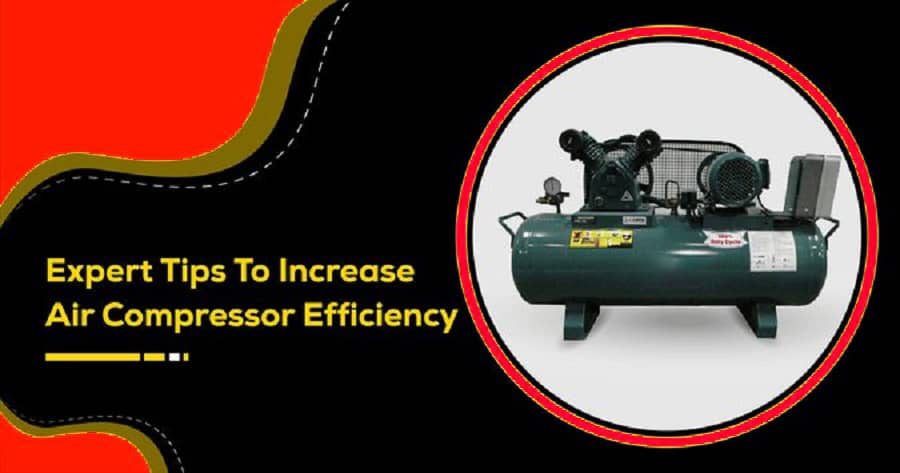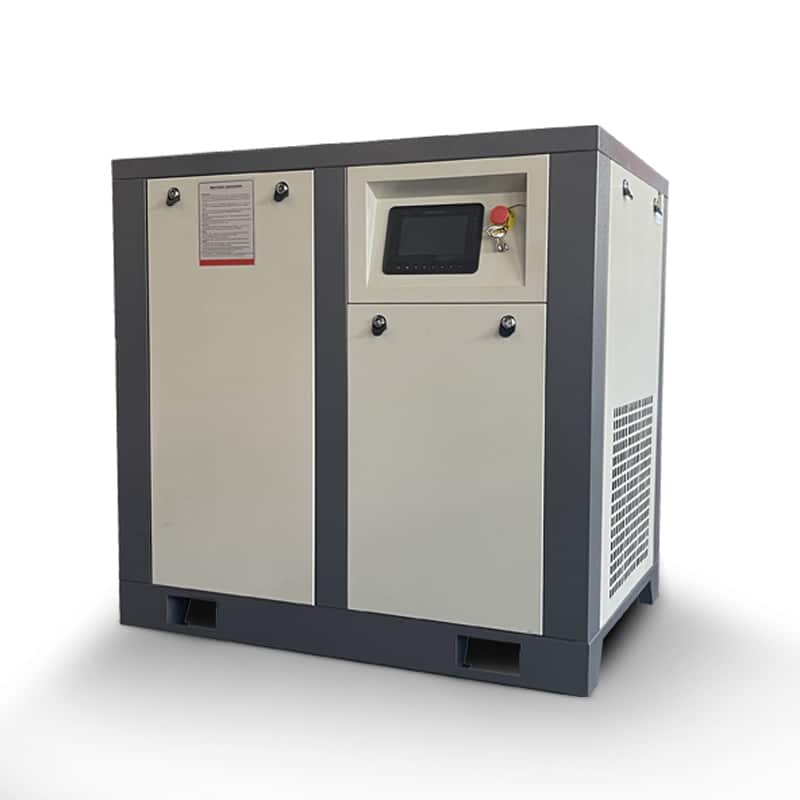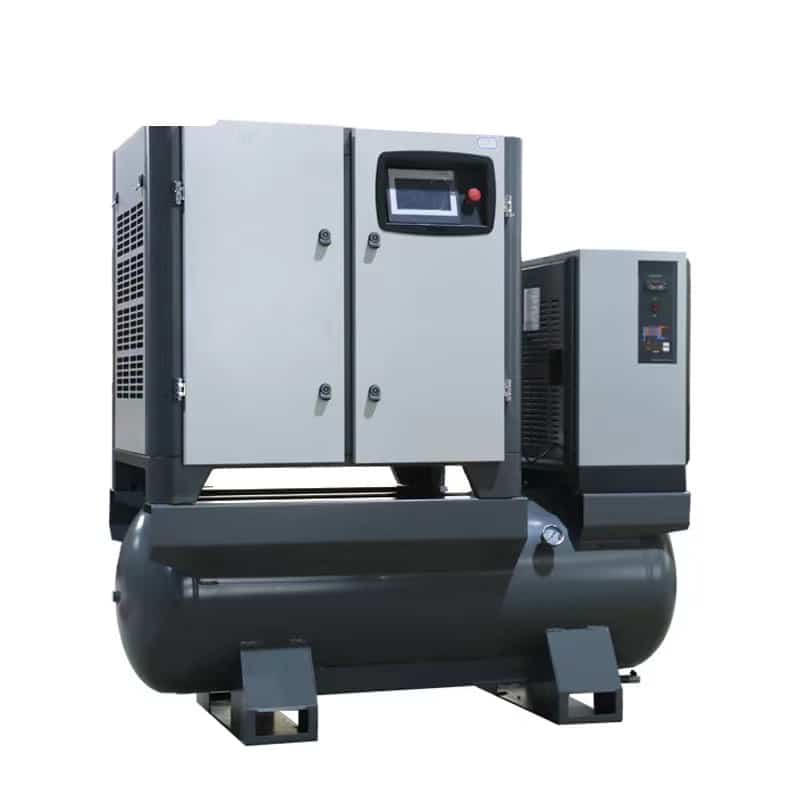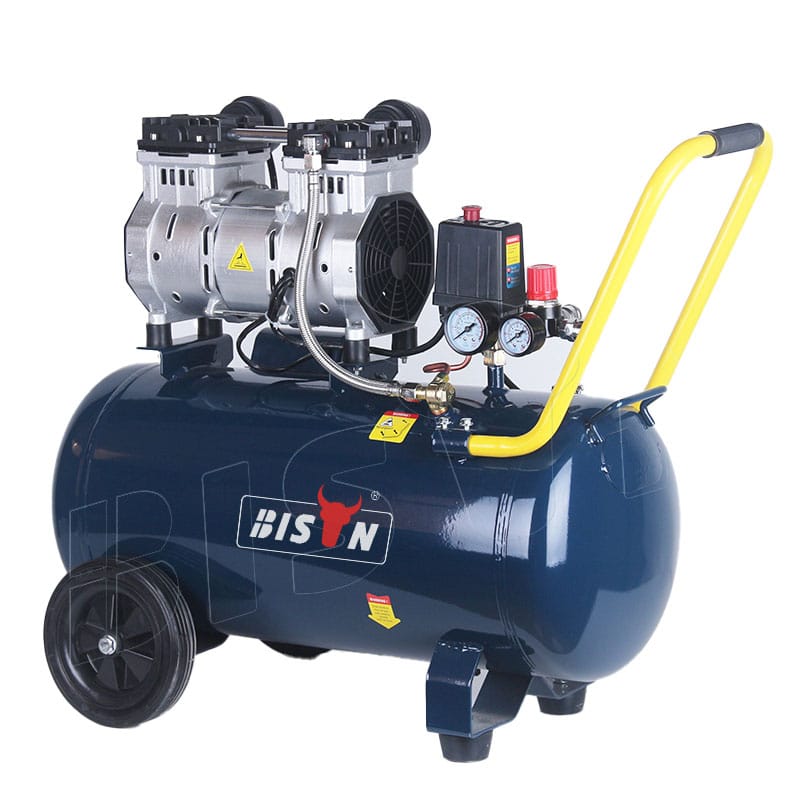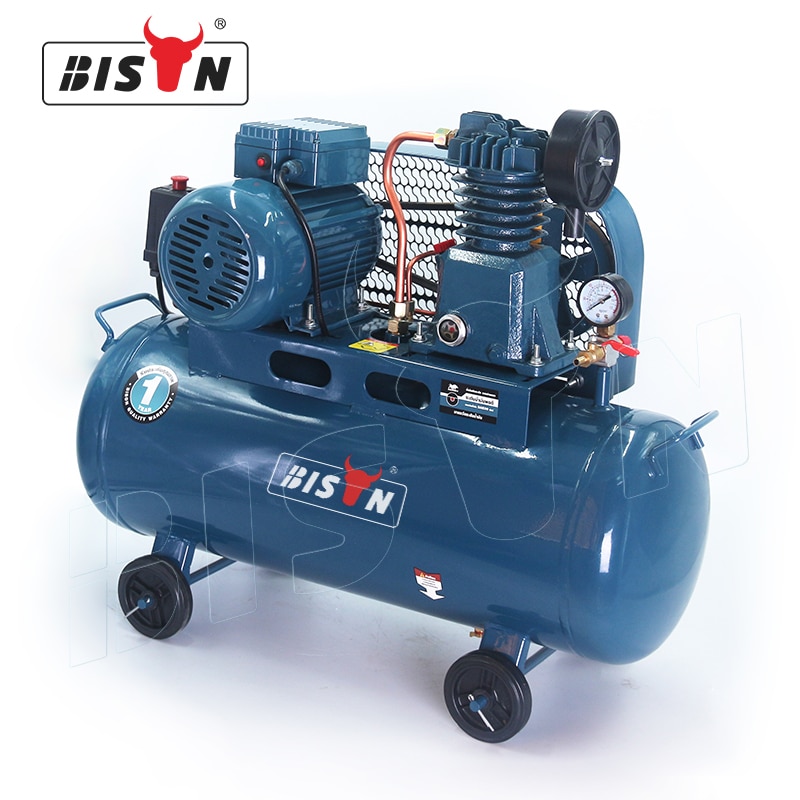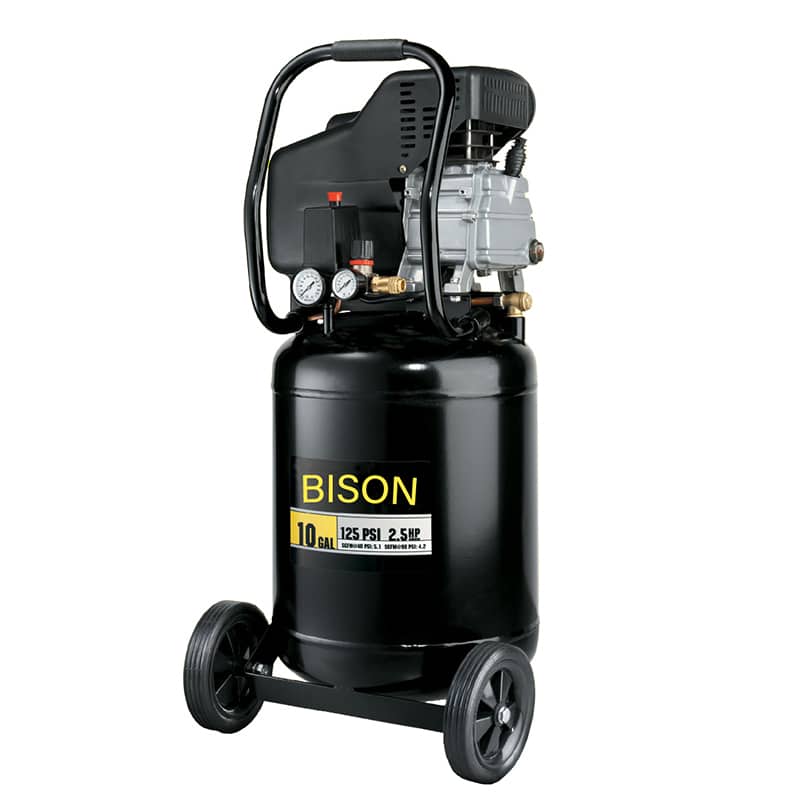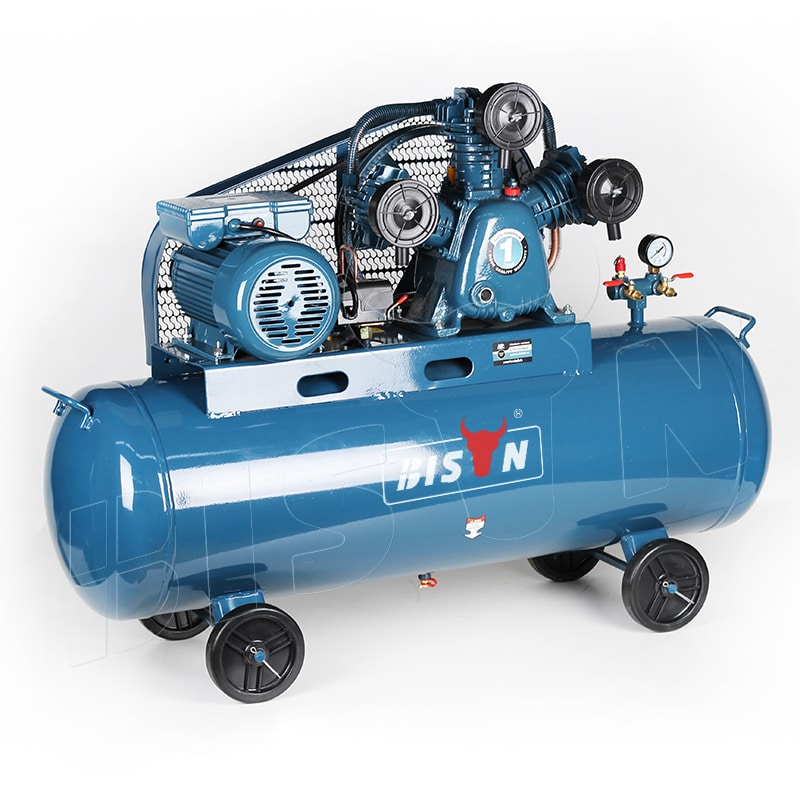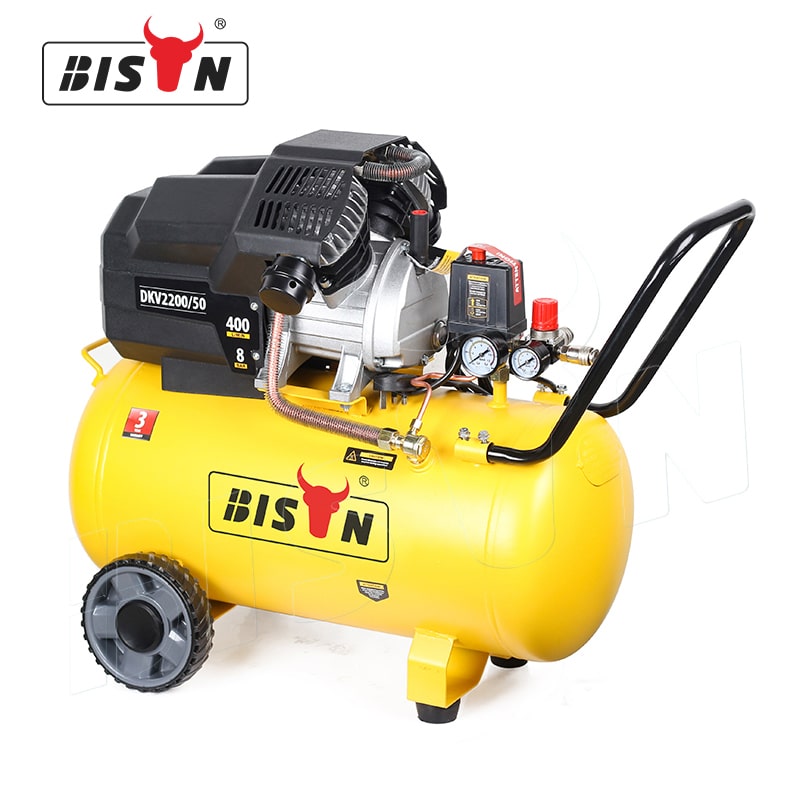air compressor blog
How to increase air compressor efficiency
- Jul 11, 2023
Compressed air is one of the most widely used forms of energy in many industries, with approximately 70% of manufacturers using compressed air systems.
Compressed air can be one of the most expensive forms of energy in a manufacturing plant, often using more energy than other equipment. One horsepower of compressed air needs eight horsepower of electricity. With many air compressors operating at as low as 10% efficiency, there is often much room for improvement. Fortunately, 50% of compressed air systems in small and medium industrial facilities have low-cost energy-saving opportunities.
Air compressor efficiency
What are the factors that affect the energy efficiency of air compressors? These factors include type, model, size, motor rating, system design, control mechanism, usage, and maintenance schedule. The leading causes of inefficiency in air compression are the increased temperature of the compressed air and heat loss from friction caused by the many moving parts of the system.
When it comes to air compressor efficiency, it is vital to check the entire system, including the air compressor itself and the supply line, air receiver, air dryer, receiver, and aftercooler. You can save energy and money by making the correct adjustments to your compressed air system.
What factors contribute to inefficiency in an air compressor?
Many factors can contribute to an inefficient air compressor. Air compressor performance may become less efficient over time when any of the following factors come into play:
a) Poor intake of air quality
If the incoming air is too hot, contains impurities, or has high humidity, the efficiency of the air compressor can be significantly reduced.
b) Inconsistent air pressure control
The air compressor control provides inconsistent or constant high pressure. When air compressors run near maximum pressure, they put more stress on the system and reduce efficiency.
c) Design system flaws
Flaws in system design can lead to inefficient air compressors. Design flaws can include:
- Improperly sized distribution systems.
- Lack of recovery systems.
- Increased heat waste.
- Unnecessary bends in piping.
- Unrepaired leaks.
d) Air compressor mismatch
The air compressor needs to be matched or adjusted adequately to the compressed air needs of the equipment. When an air compressor is not matched to the application, the efficiency and overall performance can be significantly reduced.
e) Pressure drop
A pressure drop in an air compressor system can dramatically affect the air compressor’s efficiency. Improperly sized pipes, excess moisture, dirty filters, or excessive air travel distances can cause pressure drops.
f) Unscheduled maintenance
Unscheduled maintenance can lead to premature wear and tear on the system, increasing repair costs. Due to the number of moving parts and the heavy usage of these systems, failure to develop a regular maintenance schedule can lead to inefficient air compressors.
How to increase air compressor efficiency
Increasing air compressor efficiency often starts with identifying what is causing system wear and tear. Energy-efficient compressors rely on controls and design to provide maximum efficiency.
The most efficient air compressor systems require properly adjusted controls, operating near minimum pressure, and a well-maintained system design that matches the application.
Improve system efficiency by:
- Improve intake air quality.
- Matching air compressor controls.
- Improve system design.
- Consider compressed air requirements.
- Minimize pressure drop.
- Maintain your compressor.
By using these methods to increase compressor efficiency, you can also improve the performance and life of your air compressor.
1) Improve intake air quality
Three components of an air compression system affect performance:
a) Temperature
The temperature of the intake air determines the density of the air. Cold air requires less energy to compress, so it is much more efficient to pump into an air compressor system. Avoid hot air, which is less dense, as it can significantly reduce your productivity.
b) Composition
A clean air intake ensures that compressed air can pass through the system more smoothly. Dirt, dust, or other impurities in the air can accumulate inside the air compressor. These contaminants can get on vital components, causing wear and reducing storage capacity.
c) Humidity
Moisture can be harmful to air compression systems as it can accumulate inside the system, causing components to rust. This can lead to wear, leaks, and reduced storage capacity. Dry air is less likely to damage your air compression system and the tools that work while in use.
2) Matching air compressor control
Air compressor controls match compressor output to the needs of a compressor system, which may consist of a single compressor or multiple compressors. Such controls are critical to air compressor systems’ efficiency and high performance.
Compressed air systems are designed to maintain a specific pressure range and deliver air volumes that vary with the end user’s needs. When the pressure reaches a certain level, the control system reduces the compressor output. On the other hand, if the pressure drops, the compressor output increases.
The most precise control systems can maintain a low average pressure without dropping below system requirements. Falling below the system requirements may result in device failure. That’s why matching system controls to storage capacity is so important.
The following controls help improve the efficiency of individual compressors:
- Depending on the pressure, the start and stop controls turn the compressor on and off.
- The load and unload function unloads the compressor to discharge pressure.
- Modulating control manages flow demand, while multi-step control allows the compressor to operate at part load conditions.
- Dual and automatic dual control allows the selection of start/stop or load/unload.
- Variable displacement can operate at two or more part load conditions.
- Variable speed drives continuously adjust the motor speed to meet changing demand requirements.
- Systems with multiple compressors use the system master control to coordinate all functions needed to optimize the compressed air.
- System master controls can coordinate compressed air systems when complexity exceeds the capabilities of local and network controls. Such controls can monitor system components and trend data to enhance maintenance functions.
- Pressure and flow controllers store air at a higher pressure, which can be used later to meet fluctuations in demand.
A well-designed system should use the following:
- Demand control
- Storage
- Good signal location
- Compressor control
The main objective of such systems is to deliver compressed air at the lowest steady pressure while supporting fluctuations with stored high-pressure compressed air.
With multiple compressors, sequencing control can satisfy system load by running compressors while taking them offline when not needed to meet demand. Network controls also help manage the load on the entire system.
3) Improve system design
Here are six ways to improve the design of your air compressor system.
a) Straighten the path
Narrow transfer lines or sharp bends in these transfer lines can cause increased friction and pressure drop in the system, meaning less pressure reaches the point of use. A better design without as many bends and loops should generate more pressure using the same amount of energy.
b) Save energy when you need it
Storage tanks or receivers can buffer short-term demand changes and reduce on/off cycling. Storage tanks also prevent system pressure from dropping below minimum pressure requirements when demand is at its highest. A pressure drop can cause an increase in system pressure, resulting in wasted air pressure. The storage tank size depends on the power of the compressor. For example, a 60-horsepower air compressor requires a 60-gallon air receiver tank.
c) Cool intake air
Since it takes less energy to compress cold air than warm air, you can reduce the energy needed to compress by moving the compressor intake to a shaded area outside. For example, a 20-degree Fahrenheit reduction can reduce operating costs by nearly 3.8 percent.
d) Use several small compressors
Large air compressors can be inefficient because they consume more energy per unit when operating at part load. Such a system could benefit from using many smaller compressors with sequential control, allowing parts of the system to be shut down by turning off only some of the compressors.
e) Recovery of waste heat
The waste heat can be used to boil water for space heating and to heat water. A correctly designed heat recovery unit can recover 50-90% of the electrical energy used in air compression.
f) Located near a high-demand area
By placing air receivers close to sources of high demand, it is easier to meet demand by reducing overall compressor capacity.
4) Consider compressed air needs
a) Check the load profile
A properly designed compressed air system should consider the load curve. The system must work efficiently at part load if air demand varies widely. Multiple compressors will provide a more economical energy use when demand fluctuates widely.
b) Minimize human needs
Artificial demand is the amount of excess air required for unregulated use when the pressure used is higher than that required for the application. The system produces new air if an application requires 50 psi and receives 90 psi. End-use pressure regulators can minimize artificial demands.
c) Determine the correct pressure required
The required pressure level must consider system losses in filters, piping, separators, and dryers. Raising the discharge pressure will increase the need for irregular uses, such as leaks. In other words, increased pressure will lead to inefficiencies. For example, a two psi increase in header pressure would increase energy consumption by as much as 1% due to the consumption of unconditioned air. To save energy, you should achieve high performance while reducing system stress.
d) Check for proper supply and demand
Verify that the air compressor is not too large for the end use. Considering all end uses, quantify the amount of air required for each application. A general assessment of the entire compressed air system should assist in investigating distribution system problems and minimize improper use of air.
e) Use block diagrams and pressure distribution diagrams
A block diagram will help identify all the components in an air compression system. The pressure curve shows the pressure drop in the system, which should provide feedback for adjusting the control. To complete the pressure profile, you must measure the compressor’s inlet, air/lube separator and interstage pressure differential in multistage compressors. By data logging system pressure and airflow, you can determine system outages, intermittent loads, system changes, and general conditions. Variations in pressure and airflow can be managed through system controls to minimize the impact on production.
f) Use compressed air storage
Storage can control demand events during demand peaks by reducing the decay rate and the amount of pressure drop. It can also shut down the compressor when necessary to protect critical operations from other events in the system.
5) Minimize pressure drop
As compressed air flows through a distribution system, a pressure drop occurs. Excessive pressure drops can result in poor performance and increased energy consumption. The pressure drop upstream of the compressor signal results in lower operating pressure for the end user. This requires a higher pressure to meet the compressor control settings. Always reduce the pressure drop in the system before increasing capacity or increasing system pressure. Compressed air equipment should be operated at the lowest effective working pressure for best results.
Here’s how to reduce pressure drop:
a) Maintain proper system design. The most common cause of excessive pressure drop is undersized piping between the distribution header and the production equipment. This can happen if you choose piping based on the expected average compressed air demand without considering maximum flow.
b) Maintain air filtration and drying equipment to minimize moisture. Ensure the filter is free of dirt that can restrict airflow and cause a pressure drop. Timely maintenance and replacement of filter elements are critical to reducing pressure drop.
c) Select separators, dryers, filters, and aftercoolers with the lowest possible pressure drop. Typical pressure differentials for filters, hoses, and pressure regulators are 7 pounds per square inch differential pressure (psi).
d) Choose regulators, hoses, lubricators, and fittings that perform best at the lowest differential pressure.
e) Reduce the distance air travels through the compressed air system.
Many tools can operate effectively with air supply pressures of 80 pounds per square inch (psig) or less. Reducing your air compressor discharge pressure can minimize leak rates, increase capacity, and save money.
However, reductions in operating pressure may require modifications to pressure regulators, filters, and storage dimensions. Keep in mind that if the system pressure is below the minimum requirements, the unit may not function properly.
Reduced pressure drop allows the system to operate more efficiently at lower pressures. Running the equipment at lower pressure levels can save significant energy for machinery that uses large amounts of compressed air. Components such as larger cylinders may be required to maintain proper function at lower pressure levels, but the energy savings should outweigh the cost of the additional equipment.
6) Maintain your compressor
Improperly maintained air compression systems can result in wasted energy and money. Therefore, it is essential to constantly check the system for leaks, premature wear, and accumulation of contaminants.
Fix leaks
Air waste is the leading cause of energy loss in air compression systems, wasting 20% to 30% of the compressor output. Even a small leak, if not corrected, can leak much air over time and be very costly. Remember that air loss is directly proportional to the size of the leak and the amount of supply pressure in the system.
Leaks not only waste energy but also cause a drop in system pressure, which reduces the efficiency of your air tool. This lack of pressure means the device will run longer to achieve the same result. Increased uptime also means additional maintenance or even downtime.
Detecting and fixing leaks can reduce energy loss to less than 10% of compressor output. There can be leaks anywhere in a compressed air system. Still, most leaks occur in pressure regulators, open condensate collectors and shutoff valves, disconnects, pipe fittings, thread sealants, hoses, pipes, and accessories.
To estimate leaks in a compressed air system, measure how long the compressor takes to load and unload. An air leak will cause the compressor to cycle on and off due to the pressure drop caused by the leak. Calculate the percentage of total leakage using the following form: Leakage (%) = [(on-load time in minutes x 100) / (on-load time in minutes + off-load time in minutes)]. In a well-maintained system, this percentage should be below 10%. Poorly maintained systems can leak 20% or more.
Leak Detection
Ultrasonic detectors provide the best chance of locating leaks by identifying hissing noises. Ultrasonic detectors offer speed, accuracy, ease of use, versatility, and the ability to test equipment while it is in operation.
If you don’t have an ultrasonic leak detector, soapy water, and a paintbrush can be used to paint over possible problem areas.
Leak Repair
Once the leak is located, the fix may be tightening the connection. However, it may also require the replacement of joints, pipe sections, hoses, couplings, traps, fittings, and drains. Make sure to use the proper thread sealant to install them.
You can reduce the leak by decreasing the pressure in your compressed air system until the leak is fixed. Stabilize system header pressure to the lowest range to minimize leak rates.
Prevention
A proper leak prevention plan can help identify and address future spills. It will also help maintain an efficient, stable, cost-effective air compression system. A spill prevention plan may benefit by doing the following:
- Determine the cost of an air leak. This will serve as a baseline for determining the effectiveness of the repair.
- Identify the leak. While ultrasonic leak detectors are most effective, handheld gauges can also help identify leaks.
- Document the leak. Document the leak’s size, location, type, and estimated cost so you can track where and how it happened.
- Prioritize larger leaks.
- Adjust controls to maximize energy use.
- Document the leaks. Such documentation can point to devices that may be causing recurring problems.
- Periodic review. Regular inspections will help keep the system efficient.
7) Change filters
Filters are used to ensure clean air reaches the end user. Dust, dirt, and grease can clog the filter, causing the air pressure in the system to drop. If the filter is not cleaned, the pressure drop may require more energy to maintain the same pressure. Also, be sure to use low-pressure drops, long-life filters, and the size of these for maximum flow.
8) Maintenance
Ensure procedures are in place for maintaining compressed air systems and that employees are appropriately trained. This will keep the system running efficiently for years to come.
Fortunately, there are many ways to increase the efficiency of your compressed air system. With proper maintenance, your system can deliver high performance while saving money.
frequently asked questions about How to increase air compressor efficiency
What is the maximum efficiency of the air compressor?
The isentropic calculation is based on full load operation of the fixed speed compressor only. The highest published isentropic efficiency is about 92%, and the lowest is about 50%. In general,machines above 100 HP have higher average IE than machines with lower HP.
How important is CFM for air compressors?
CFM is cubic feet per minute, which shows the compressor's flow rate-or the amount of air a compressor can produce at a given pressure level. Compressors with higher CFM ratings typically deliver more air, making them ideal for larger applications.
How to test the efficiency of a compressor?
To enable accurate measurement of efficiency, turn on the air compressor, manually set the exhaust pressure to the air compressor's rated working pressure, and maintain the pressure stable for more than 5 to 8 minutes.
If you have any enquiries about the BISON air compressor, we would love to hear from you.


